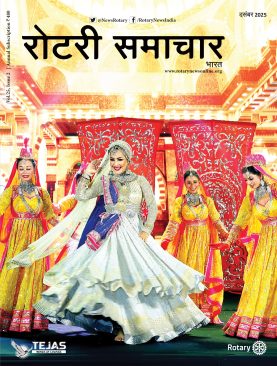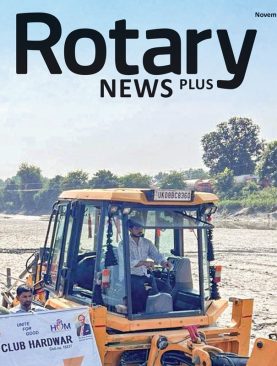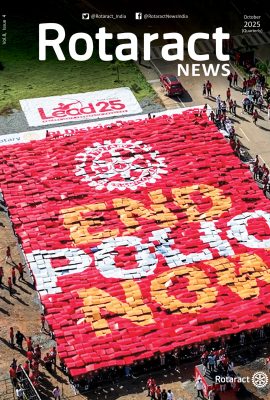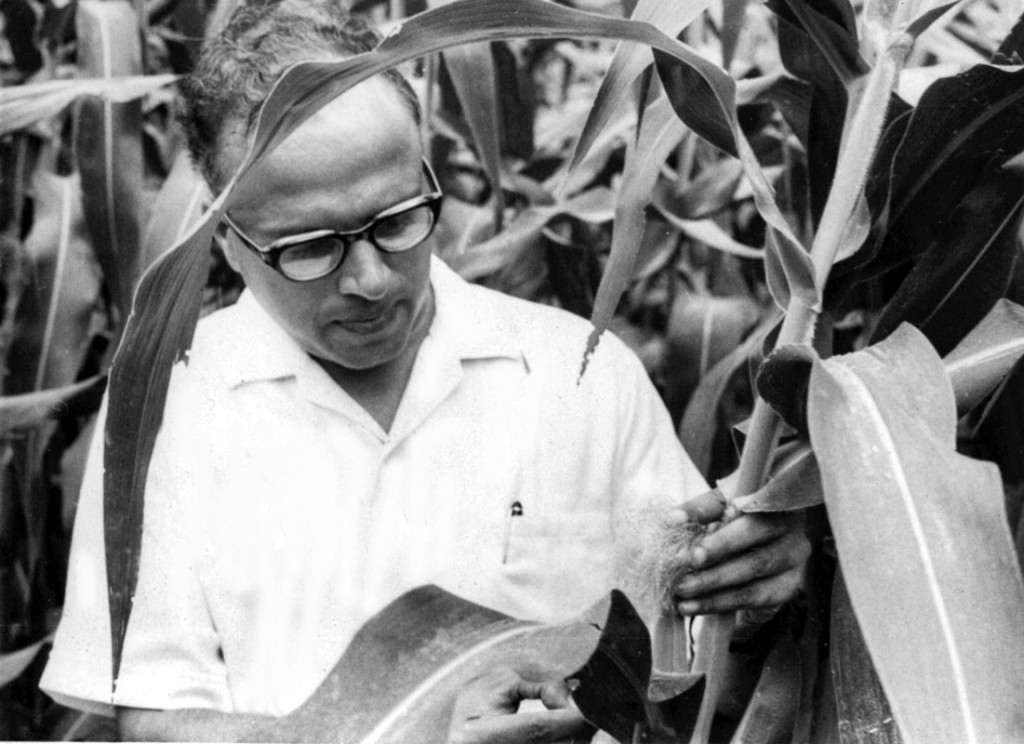I will always remember M S Swaminathan as an extremely kind, gentle, courteous and affable gentleman. As a journalist working for the Indian Express first, and then the Hindu Business Line, I started reporting on his work, vision and mission, several years before he founded the M S Swaminathan Research Foundation (MSSRF) in Chennai in 1988. It was set up from the proceeds of the first World Food Prize that he was given. To be honest, he was the first one to kindle interest in me about all things related to farming and agriculture.
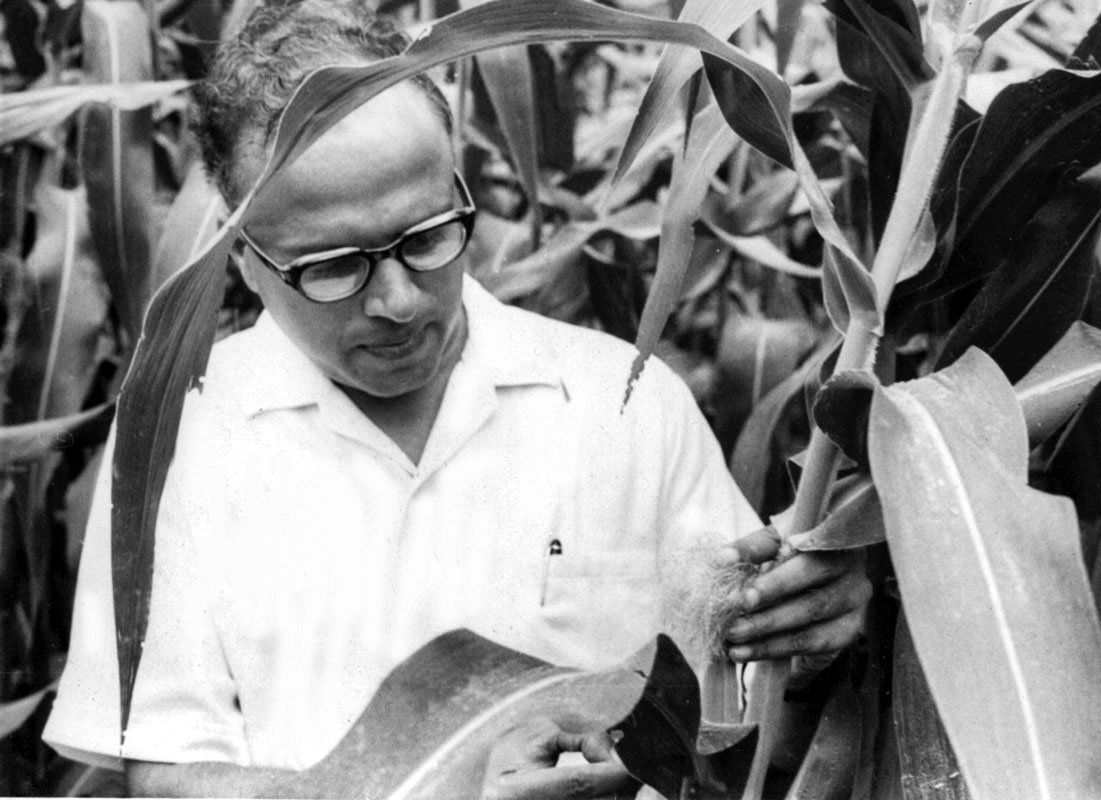
If the 100-odd kg of the dwarf variety of wheat seeds from Mexico, given to India by the Nobel Laureate Norman Borlaug, could be converted, over the next few decades into over a hundred million tonnes of wheat, ending India’s food shortage, it was thanks to M S Swaminathan.
In the 1980s, 90s and the following decade, a bunch of half-a-dozen journalists would always turn up at the meetings, events and press conferences organised by this ingenious agricultural scientist who had the unique ability and the remarkable gift of connecting with people, be they politicians, government officials, his own community of researchers and scientists from across the world, and most of all, farmers in the field. He was no ivory tower scientist. If the 100-odd kg of the dwarf variety of wheat seeds from Mexico, given to India by the Nobel Laureate Norman Borlaug, could be converted, over the next few decades into over a hundred million tonnes of wheat, ending India’s food shortage, it was thanks to the magical connect the man, who passed away in September, at the age of 98, had with different sets of people.
That connect extended to us journalists; every time I reached the Foundation’s campus at Taramani in Chennai, and entered the meeting hall, he would come forward with a warm smile, hold my hand and introduce me to whoever he was chatting with, and quite often these were distinguished scientists from across the world. On one occasion, in February 1996, I found myself shaking hands with the messiah who was known all over the world as the main enemy of global hunger… Norman Borlaug himself. The occasion was the inauguration of the Borlaug Hall at the MSSRF campus. He extended the same courtesy and warmth to all the journalists he was regularly in touch with.
It was his humility and easy accessibility that endeared Swaminathan to tens of thousands of farmers, including women farmers across the country. Hence it was no surprise to read his daughter and former WHO chief scientist Soumya Swaminathan’s tribute to her father where she recalls how only recently, she was told by a group of women farmers in a village in Tamil Nadu that “your appa changed our lives”. In that village 90 per cent of the farmers are women. “Empowering women in agriculture was one of his biggest passions and he ensured that gender was included as a chapter in the Sixth Planning Commission along with environment. He believed that when women were empowered with knowledge, they would care for crops without harming the environment,” she wrote.
“The first rice cultivators were women,” the agricultural scientist had once said, noting that there was a portrait of a woman in a temple at Along, a town in Arunachal Pradesh, whom the local people considered to be the one who introduced rice into their cultivation.
M S Swaminathan believed that when women were empowered with knowledge, they would care for crops without harming the environment.
— As written by his daughter Soumya Swaminathan in a tribute to her father.
So what set Swaminathan apart and made him such a special human being? Let’s begin at the beginning. The son of a surgeon, he was educated in India and later Cambridge, where he did his doctorate in 1952. During the next two decades he held a number of research and administrative positions. While working in those positions, he helped introduce Mexican semidwarf wheat plants to Indian fields and helped to bring about greater acceptance of modern farming methods.

Interestingly, the degree holder in agriscience and postgraduate in cytogenetics wrote the civil services exam but chose not to join the Indian Police Service (had he done so, he would have certainly made one of the gentlest and most humane cops ever!) and instead chose a UNESCO fellowship in genetics in the Netherlands. After a doctorate in philosophy at Cambridge, he moved to the US for postdoctoral research at the University of Wisconsin where he providentially met in 1953 the legendary Norman Borlaug, when the latter gave a speech in controlling some disease in wheat. It was the beginning of an association and friendship that changed India’s history in ensuring food security.
One of the most fascinating stories in Indian agriculture is how he used plant genetics to boost farm production. Till 1965, when our population was more than 500 million, wheat output in India was barely 12 million tonnes. We were infamous for living ‘ship to mouth’, as was snobbishly referred to in the western world, referring to our heavy dependence on wheat imported from the US. India was known for being a begging bowl and it was said derisively that “if we don’t put foodgrains in this begging bowl, millions will die.”

We have certainly come a long way thanks to the genius and eagle eye of Swaminathan, and of course the support he got from the government of India, which was then led by Prime Minister Lal Bahadur Shastri, with C Subramaniam being the agriculture minister.
In the decades following the late 1970s, our annual wheat production has multiplied nearly 10 times to 112.18 million tonnes a year (2022–23), 4.4 million tonnes above the previous year.
By 1959 Borlaug had got impressive results in growing high-yielding varieties of wheat in Mexico, using a dwarfing gene from Japan. This variety allowed the plant to hold more grains and hence increase the output significantly. Only one eagle-eyed scientist in Asia, Swaminathan, noticed this admirable phenomenon, and wrote to his superiors in the Indian Agricultural Research Institute where he was then working, suggesting they invite Borlaug to India.
Those days, the Indian government was constantly looking at ways to combat food shortage. Borlaug visited India in March’63 and later sent 100kg of seeds of the dwarf and semidwarf varieties and the farmers in Punjab were persuaded to try out this variety. But the wheat was red like the Mexican wheat, so Indian scientists crossbred it with local varieties and today’s golden wheat that goes into our rotis, parathas and puris is the result of that cross-breeding!
Swaminathan’s unique gift was that he could get out of the armchair research in genetic science, into the rice and wheat fields of India, and convince farmers to try out new techniques.
Swaminathan’s unique gift, and the reason for his immense success and popularity was that he could get out of the armchair research in genetic science, into the rice and wheat fields of India and convince farmers to try out new techniques. With farmers, he spoke their language, and not scientific jargon. Not only were Borlaug’s seeds given to the farmers, they were also supported with supplies of chemical fertilisers and pesticides, agricultural credit and help with marketing. In all this he was helped by Union agriculture minister Subramaniam.

The Green Revolution really took off by 1966, and by 1968 the dwarf variety had brought bountiful harvests of wheat and in the coming decades, India became self-sufficient in food production. Grain production increased exponentially at a time when India was facing widespread starvation and turned Punjab and Haryana into bread baskets for wheat and rice, particularly helping low-income farmers. It rescued the country from an impending mass famine and over-dependence on foreign aid. His major achievements included developing high-yielding basmati varieties, using technology of mutation for various crops and application of genetics for boosting food production. For his work, Swaminathan was named one of the 20 most influential Asians of the 20th century by Time magazine.
Over the years he held many important administrative positions in various agricultural research institutions including that of director general at the Indian Council for Agricultural Research. He received the Padma Vibhushan in 1989 and also became a Rajya Sabha MP.
But Prof Swaminathan did more than just usher in the Green Revolution. The governments of any era — be it at the Centre or the state, depended heavily on his sagacity, wisdom, genial and inclusive nature and his sharp as well as humane mind, to provide both solutions and succour during periods of deep distress, such as the 2005 tsunami which devastated coastal regions of India.
A major contributor of inputs for evolving a national coastal rehabilitation policy, the MSSRF has over the past few decades done extensive research and extension work on strengthening coastal systems management from the scientific, technological, economic and social perspectives. He provided holistic approach for looking at any natural disaster; for eg, after the tsunami devastation, he advised the government to look first of all at the psychological rehabilitation of those living along the coastal belt, whose homes and livelihoods were destroyed by the tsunami. Then came immediate livelihood implements, such as fishermen being given boats, catamarans and so on.
In his passing India has lost a globally respected agricultural scientist, the farmers have lost a genial and caring friend, the government a sane, balanced and sagacious advisor. But the biggest loss is to the poor and marginal farmers, and of course, the small women farmers to whom this gentle, and always smiling man, gave the hope and confidence to grow their own crops… and graduate from being mere field workers to being the boss of their own farm, however small it might be!
Images courtesy: M S Swaminathan Research Foundation


